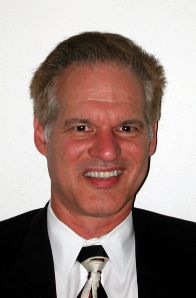|
|
|
Friday, September 14th, 2012
A Friday series exploring Startups and the people who make them go. Read all If the Shoe Fits posts here
 Pretty much anyone breathing who has any link to the tech world is familiar with the patent lawsuit that Apple just won (for now) over Samsung. Pretty much anyone breathing who has any link to the tech world is familiar with the patent lawsuit that Apple just won (for now) over Samsung.
It reminded me of an episode of Shark Tank when Mark Cuban blew his top over the entrepreneur’s patent contending that it should never have been issued.
I would love to hear his reaction to Apple’s patented rounded corners (that obviously predate not just the iPhone, but Apple itself).
And that train of thought reminded me of something I wrote for Technorati last year about Entrepreneur Magazine; here it is slightly updated for accuracy.
What better way to win the hearts and eyeballs of your target market than by suing them?
Talk about lousy customer service.
But that’s the approach taken by Entrepreneur Media Inc. (EMI), publishers of Entrepreneur magazine and associated properties, such as entrepreneur.com.
The original founder trademarked “entrepreneur,” which seems contrary to the concept of “distinctiveness” (Patent Office info), but what do I know?
Policing the use of ‘entrepreneur’ are the 2,000 lawyers employed by Latham & Watkins who work out of 31 offices around the world.
We’re not talking just about letters; they go after small biz in court and win big judgments.
I had a joint venture with Bun in a Can called Watch Startup Café where we posted videos of entrepreneurs talking about their companies and the passion that drove them to do it.
We almost named it “Meet the Entrepreneurs”—lucky for us we didn’t.
I wonder if I should expect a cease and desist letter for Thursday’s Entrepreneur posts.
There has been much talk about the need to update the US Patent and Trademark Office and how tough it is to get protection for new services, business processes, etc.
It’s probably simplistic of me, but I think the Patent Office should clean up its old messes, too.
One thing that might help is if instead of protesting in comment sections those who move in the entrepreneurial world canceled their subscriptions.
That is what I’m doing.
“Entrepreneur;” “rounded corners;” sometimes I really do wonder what’s in the water in Washington.
Option Sanity™ wins their hearts through fairness.
Come visit Option Sanity for an easy-to-understand, simple-to-implement stock allocation system. It’s so easy a CEO can do it.
Warning.
Do not attempt to use Option Sanity™ without a strong commitment to business planning, financial controls, honesty, ethics, and “doing the right thing.”
Use only as directed.
Users of Option Sanity may experience sudden increases in team cohesion and worker satisfaction. In cases where team productivity, retention and company success is greater than typical, expect media interest and invitations as keynote speaker.
Flickr image credit: HikingArtist
This article was first published as Entrepreneur Magazine Vigorously Defends ‘Entrepreneur’ Trademark on Technorati
Posted in If the Shoe Fits | No Comments »
Thursday, April 21st, 2011

Grrrr. I hate it when bad human traits are excused based on career choice, position, etc.
A group of experienced small biz owners ranging from late thirties to late fifties described themselves thus, impatient, short on focus, easily frustrated, likely to jump in and solve a problem rather than count on the employee to do it; traits that have no place in good management (or leadership, if you prefer).
The more accurate analysis is captured in a comment citing similarities in the corporate world,
The top managers do delegate (maybe that’s how they get to the top) but the rest stick their noses into everything just like small business owners. Guess it is just human nature and the reason most people are not very good managers.
Before becoming an entrepreneur, manager, worker, parent, whatever, you were you. You possessed a certain MAP (mindset, attitude, philosophy™) and embodied certain traits and you took those with you into your career and wider life.
Extreme examples make this glaringly clear, although even these examples are changing,
- Cops who intimidate were bullies on the playground and sought a career in which bully MAP could flourish.
- Pedophile priests were pedophiles long before they became priests and gravitated to a profession with both access and protection.
Careers don’t create traits, although they often magnify them.
“That’s who I am” carries a second, unspoken thought, “so deal with it.”
But “who I am” is your choice, not mine, and there is no good reason why I have to deal with it.
Image credit
Posted in Entrepreneurs | No Comments »
Tuesday, March 17th, 2009
 2008 – RIP Investment Capital. 2008 – RIP Investment Capital.
The significant reduction of investment capital ranks as one of the major challenges affecting businesses in 2009. While 2008 may be the year that investment capital evaporated, we are only now learning to live with the loss.
The drought in venture capital has been well documented, with only seven venture-backed companies completing IPO’s in 2008, generating a meager total of $551 million in liquidity (Dow Jones VentureSource). Liquidity through acquisition also fell, by 50% from 2007, both in total dollar volume and in median price paid. In 2009 venture funding will be both smaller and more difficult to close.
Start-up funding from other sources, such as angels investors and friends & family has also plummeted, in direct relation to the decline in the stock markets. Bank credit, either from loans or from credit cards, has shriveled. This deleveraging will become a permanent part of the economic landscape, for the next decade or longer.
Business Models for the New Decade—Small is Beautiful
In response, many small businesses are exploring new business models that do not depend upon external investment capital and long time horizons for liquidity. While these models are only beginning to emerge, a few trends are already evident:
- Immediate cash flow—without investment capital, cash generation becomes critical. The criteria for business investment shifts from total ROI to payback period, measured in weeks. New business models will generate cash almost immediately.
- Small scale—Scalability has lost its luster. First, there only limited investment capital to fund infrastructure for scaling. Second, the pressure for immediate cash flow shortens the window for investment in scaling. Third, the value of scaling is much lower when the traditional exits—IPO and M&A—are reduced.
- Multiple revenue streams—in the current risk-averse environment, multiple cash streams have strong appeal. Multiple streams can create challenges with business focus, but the combination of smaller scale and overwhelming drive for cash flow can help to keep the organization on track.
- Linked, but not integrated—Linkage generates benefits to the organization, but preserves flexibility and maintains focus for each individual cash stream. Tight integration, often a requirement for scalability, needs more capital and a longer time frame.
- High dependence on the owner/operator—this is a significant diversion from the venture capital business model, in which the investor/owner becomes a central actor in the success of the company. In the venture model, the entrepreneur develops and prototypes a business concept, then raises venture capital. At some point, the venture owners often replace the entrepreneur with a “professional manager” to grow the company into an acquisition candidate, or rarely into an IPO. Then the “IPO executive” steps in to provide the leadership to close the acquisition or acquisition. Note that the venture investor / owner, not the entrepreneur, provides the continuity in this model.
Example—Building Contractor Reorganizes for Multiple Revenue Streams
The Texas building contractor we met in the last post refocused his business on restoring foreclosed houses owned by banks when financing for new home developments dried up. He targeted small investors searching for cash flow from rental properties. Then he assembled several small service teams to deliver a complete package to rental property investors:
- house acquisition and restoration,
- mortgage lender,
- property manager, and
- long-term maintenance service. Each team is a separate company and a separate revenue generator with a separate revenue source.
Two threads link these companies economically. First, they all focus on a specific type of customer—a private investor in small rental properties. Each company provides a separate service, but all the services are necessary to offer a complete solution for the customer. Each individual company succeeds better when the entire group succeeds. Second, each company owner has some ownership in the other companies. As a result, the companies are more than just mutual suppliers to the customer. From the customer’s viewpoint they function as a single operation. They are linked, but not integrated.
Build Your Business for Life—Not for the “Exit”
This is perhaps the single biggest change in the emerging business model.
There is no exit.
This is not a threat from Jean-Paul Sartre, the author of the depressing existentialist play No Exit. Rather it is the opportunity of a lifetime. The entrepreneur is a business owner for a long time, even for a lifetime. The rewards for building and owning the business must directly from the business. Any financial rewards come from a stream of profits generated by the business. Any personal rewards in satisfaction come from the business itself. This new model, surprisingly, leads us back to the roots of entrepreneurship.
Do something because you love it.
The rewards will come to you.
Posted in Business info, Culture, Strategy | 1 Comment »
|
 Subscribe to
Subscribe to
MAPping Company Success
About Miki 
Clarify your exec summary, website, etc.
Have a quick question or just want to chat? Feel free to write or call me at 360.335.8054
The 12 Ingredients of a Fillable Req
CheatSheet for InterviewERS
CheatSheet for InterviewEEs™
Give your mind a rest. Here are 4 quick ways to get rid of kinks, break a logjam or juice your creativity!
Creative mousing
Bubblewrap!
Animal innovation
Brain teaser
The latest disaster is here at home; donate to the East Coast recovery efforts now!
Text REDCROSS to 90999 to make a $10 donation or call 00.733.2767. $10 really really does make a difference and you'll never miss it.
And always donate what you can whenever you can
The following accept cash and in-kind donations: Doctors Without Borders, UNICEF, Red Cross, World Food Program, Save the Children
*/
?>About Miki
About KG
Clarify your exec summary, website, marketing collateral, etc.
Have a question or just want to chat @ no cost? Feel free to write
Download useful assistance now.
Entrepreneurs face difficulties that are hard for most people to imagine, let alone understand. You can find anonymous help and connections that do understand at 7 cups of tea.
Crises never end.
$10 really does make a difference and you’ll never miss it,
while $10 a month has exponential power.
Always donate what you can whenever you can.
The following accept cash and in-kind donations:
|
 Pretty much anyone breathing who has any link to the tech world is familiar with the patent lawsuit that Apple just won (for now) over Samsung.
Pretty much anyone breathing who has any link to the tech world is familiar with the patent lawsuit that Apple just won (for now) over Samsung.






